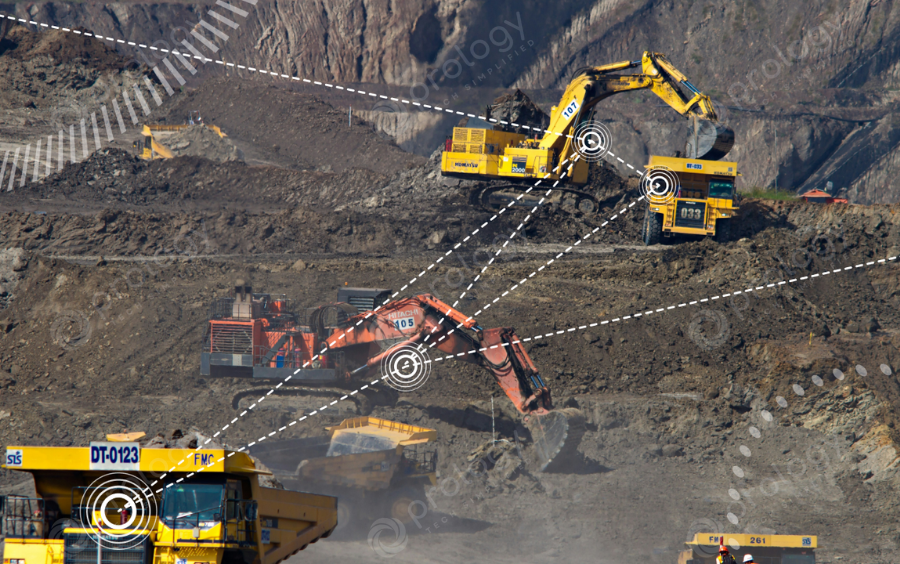How to Deploy an Effective Industrial Network for Mining with Cisco

1. Building a Reliable Industrial Network for Mining with Cisco
Mining operations are increasingly dependent on advanced industrial networks to enhance efficiency, ensure safety, and maintain seamless operations. The harsh mining environment—with extreme temperatures, dust, and remote locations—demands a highly reliable and secure network infrastructure. Cisco’s industrial networking solutions provide robust connectivity, real-time data access, and enhanced cybersecurity, making them ideal for modern mining applications.
A well-designed industrial network for mining enables:
- Real-time monitoring and automation for improved decision-making.
- Secure and resilient connectivity across vast mining sites.
- Scalability to support future expansion and new technologies.
- Operational efficiency and cost reduction by minimizing downtime and optimizing resource utilization.
This guide outlines the key steps to deploying an effective industrial network in mining using Cisco’s solutions.

2. Key Steps for Effective Industrial Network Deployment
2.1. Assess Network Requirements
Before deploying a network, it is essential to analyze and identify the critical connectivity needs of the mining site. This assessment should include:
- Remote Monitoring: Ensure real-time surveillance and equipment monitoring using IoT sensors and cameras.
- Automation & Control: Support automated drilling, conveyor belt operations, and vehicle tracking systems.
- Workforce Communication: Provide seamless communication for field workers, control centers, and autonomous vehicles.
- Environmental & Safety Monitoring: Enable early detection of hazardous conditions like gas leaks and ground instability.
A comprehensive network assessment helps in designing a system tailored to the operational needs of the mining facility.

2.2. Choose Rugged Industrial Networking Equipment
Mining environments require durable and high-performance networking equipment capable of withstanding harsh conditions. Cisco’s industrial-grade networking solutions are designed to operate reliably in such environments:
- Cisco Industrial Ethernet (IE) Switches: Designed for extreme temperatures, shock, and vibration resistance.
- Cisco Industrial Routers: Ensure stable and secure connectivity with support for multiple network interfaces, including fiber optics and LTE/5G.
- Cisco Industrial Wireless Solutions: Provide reliable Wi-Fi coverage for mobile equipment, vehicles, and field workers.
Deploying ruggedized Cisco hardware ensures high uptime and network performance in demanding mining environments.

2.3. Implement Secure & Scalable Architecture
Security is a major concern in industrial networks, as cyber threats can disrupt operations and compromise sensitive data. Cisco provides robust security solutions to protect mining networks:
- Cisco Cyber Vision: Monitors and secures industrial assets by providing real-time visibility into network activity and detecting potential threats.
- Cisco Firepower Security: Delivers advanced threat protection, intrusion prevention, and secure VPN access.
- Segmentation & Access Control: Implement VLANs, firewall policies, and Zero Trust security models to prevent unauthorized access.
Additionally, designing a scalable network architecture ensures that future technology upgrades and expansions can be accommodated without major overhauls.

2.4. Enable Real-time Data & Automation
Industrial automation and data analytics play a crucial role in modern mining operations. Cisco’s networking solutions support IoT and Edge Computing technologies that enable:
- Predictive Maintenance: IoT sensors collect and analyze equipment performance data to predict failures before they occur, reducing downtime and repair costs.
- Edge Computing: Processes critical data locally, reducing latency and optimizing real-time decision-making.
- Operational Efficiency: AI-powered analytics enhance workflow automation and energy management.
By leveraging IoT and real-time analytics, mining companies can improve safety, reduce costs, and optimize operations.

2.5. Ensure Redundancy & Reliability
To maintain continuous operations, a mining network must be designed with built-in redundancy and failover mechanisms. Key reliability measures include:
- Redundant Network Paths: Using multiple communication links (fiber optics, LTE, satellite) to prevent single points of failure.
- Backup Power Solutions: Deploying uninterruptible power supplies (UPS) and alternative energy sources to sustain network uptime.
- Failover Mechanisms: Configuring automatic failover between primary and backup networks to ensure uninterrupted connectivity.
A resilient network infrastructure minimizes the risk of downtime, ensuring continuous and reliable mining operations.

3. Ensuring a Future-Ready Industrial Network
Deploying an industrial network with Cisco’s mining solutions offers businesses a reliable, secure, and scalable infrastructure tailored to their operational needs. A well-planned industrial network provides:
- Enhanced efficiency through automation and predictive maintenance.
- Improved safety by enabling real-time monitoring and communication.
- Future-proofing with scalable architectures that support technological advancements.
By implementing Cisco’s industrial networking solutions, mining companies can optimize performance, reduce costs, and stay competitive in an evolving industry.
Contact us today for expert advice and the best pricing on Cisco industrial networking solutions for your mining operations!
_________________________________________________________________________________________
Prology - Leading Network Equipment Supplier in Australia
Address: Unit 8/4A Bachell Ave, Lidcombe NSW 2141, Australia
Hotline: +61 2 8061 6886
Email: sales@prology.net
Website: prology.net
High-Quality Network Equipment | Competitive Pricing | Fast & Global Shipping








